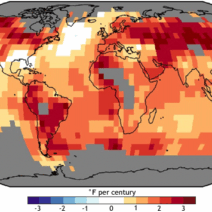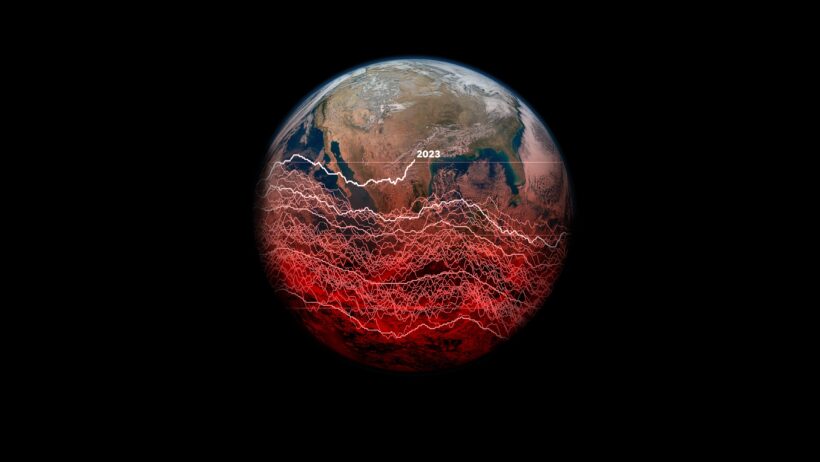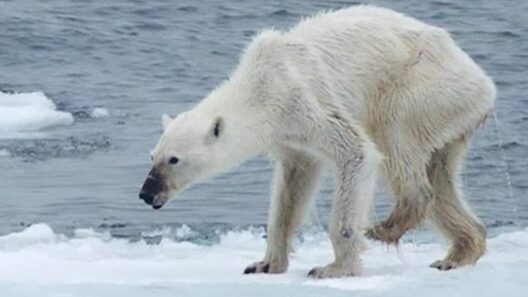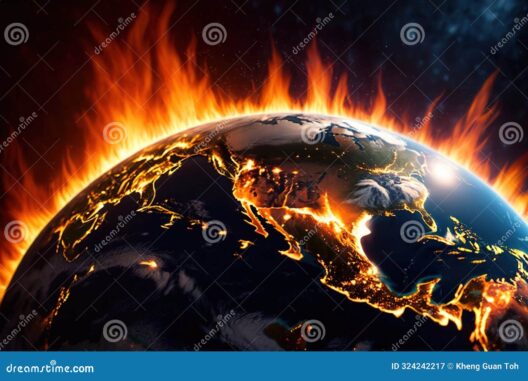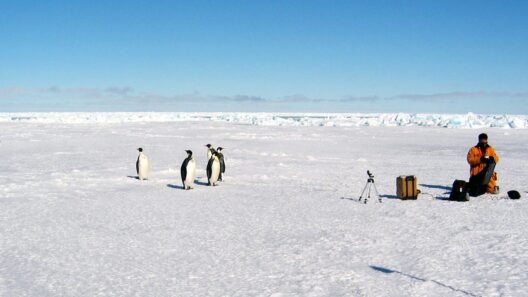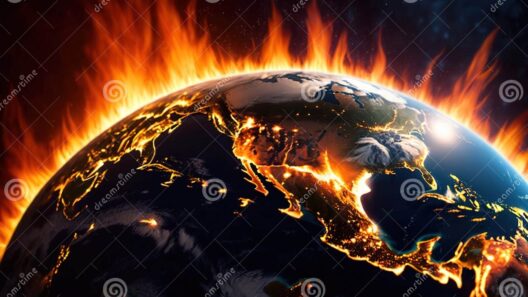As we glance upon the tapestry of Earth’s history, a tantalizing query emerges: Is this the first time Earth is heating up? While the answer seems deceptively simple, the complexities of climate change unravel a multifaceted narrative, littered with epochs of fluctuation and transformation. To fully grasp the implications of contemporary climate patterns, it is essential to delve into the planet’s climatic past, assess the markers of change, and ponder the consequences of our current trajectory.
Thousands of years of geological history reveal a world in perpetual metamorphosis. Earth’s climate has oscillated between periods of warming and cooling, sculpted by natural phenomena such as volcanic eruptions, variations in solar output, and the intricate dance of tectonic plates. For instance, during the Pleistocene Epoch, massive ice sheets enveloped significant portions of the planet, ultimately yielding to warmer interglacial periods. These epochs serve as a testament to Earth’s capacity for dramatic climate shifts.
However, the current phase of warming, often dubbed the Anthropocene, stands apart from historical precedents. The term suggests a new geological epoch influenced predominantly by human activity. With an average global temperature increment exceeding 1.1 degrees Celsius above pre-industrial levels, our present reality illustrates a distinct trajectory unlike any recorded in recent geologic times. At this juncture, a potential challenge looms: can we differentiate between natural oscillations and anthropogenic impacts, or is it a moot point?
One of the most salient characteristics of the present warming phenomenon is its unprecedented acceleration. Natural climate oscillations typically unfold over millennia, allowing ecosystems to gradually adapt or evolve in response. In stark contrast, our current warming trend has manifested over a mere century. The relentless consumption of fossil fuels, deforestation, and industrial agriculture are the architects of this rapid change, leading to a significant uptick in greenhouse gas emissions. Carbon dioxide levels, for example, have surged from approximately 280 parts per million to over 410 parts per million today, a harbinger of the heat to come.
Additionally, one must contemplate the implications of climate feedback loops. Melting polar ice caps and glaciers, for example, contribute to a feedback mechanism; as reflective ice diminishes, darker ocean waters absorb more sunlight, hastening further warming. Such phenomena were conspicuously absent in many earlier climatic eras. The urgency of the challenge cannot be overstated: the ramifications of these feedback loops extend beyond mere temperature increases; they jeopardize ecosystems, biodiversity, and human societies alike.
Humanity now faces a plethora of dilemmas stemming from this accelerated warming. Sea-level rise threatens to inundate coastal communities, the frequency and intensity of severe weather events escalate, and agricultural productivity hangs in the balance. The risks posed to food and water security ripple across the planet, threatening the most vulnerable populations disproportionately. Herein lies another whimsical inquiry: can humanity rise to the occasion and address the compounding threats of climate change? Or shall we continue to flounder amidst the rising tempest?
Despite the gravity of the crisis, there exists a glimmer of hope—a burgeoning global consciousness regarding climate action. Grassroots movements, innovative technologies, and policy reform are indicative of a collective yearning for change. Renewable energy sources have surged into prominence; solar and wind power are no longer fringe alternatives but are heralded as viable solutions for quelling greenhouse gas emissions. However, the momentum must not dwindle. It necessitates a concerted effort from individuals, industries, and governments alike to embrace sustainable practices that ensure ecological integrity.
Pensive contemplation regarding climate resilience invites creative solutions. Reforestation and afforestation serve as formidable allies in capturing atmospheric carbon, while regenerative agriculture can aid in rejuvenating degraded lands and enhancing food security. Urban planning embracing green architecture and transportation alternatives also plays a pivotal role in mitigating urban heat islands and fostering sustainable living environments.
Yet, a fundamental question persists: will society’s willingness to confront these challenges withstand the test of time? To sustain momentum, the narrative surrounding climate change must shift from one of fear and despair to one of empowerment and possibility. This requires a multidisciplinary approach, fostering dialogue among scientists, policymakers, business leaders, and communities to co-create actionable pathways toward sustainability.
The exploration of climate change, particularly through the lens of its historical context, unveils the reality that Earth is undoubtedly heating up—not as a singular event but as a complex interplay of natural and human-induced forces intertwined. The current warming, while unprecedented in its rapidity and scale, necessitates proactive engagement and innovation. With the potential consequences looming on the horizon, the question remains: is humanity equipped to face the challenges forthcoming, or shall we succumb to the perils of inaction?
As Earth traverses this critical juncture, our collective choices will carve the path forward. Every small decision, every advocacy effort, every technological advancement can cumulatively culminate in monumental change. The narrative of climate change is still being written, and it beckons each of us to be active participants in shaping a sustainable future for generations to come.
